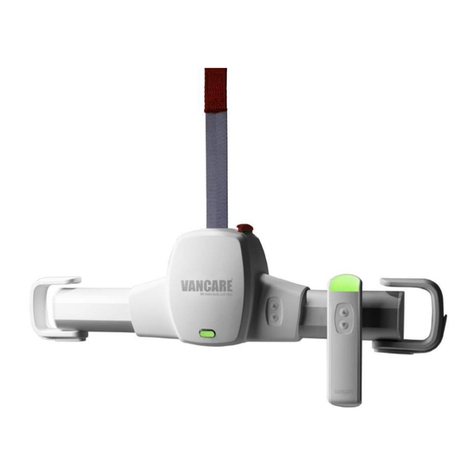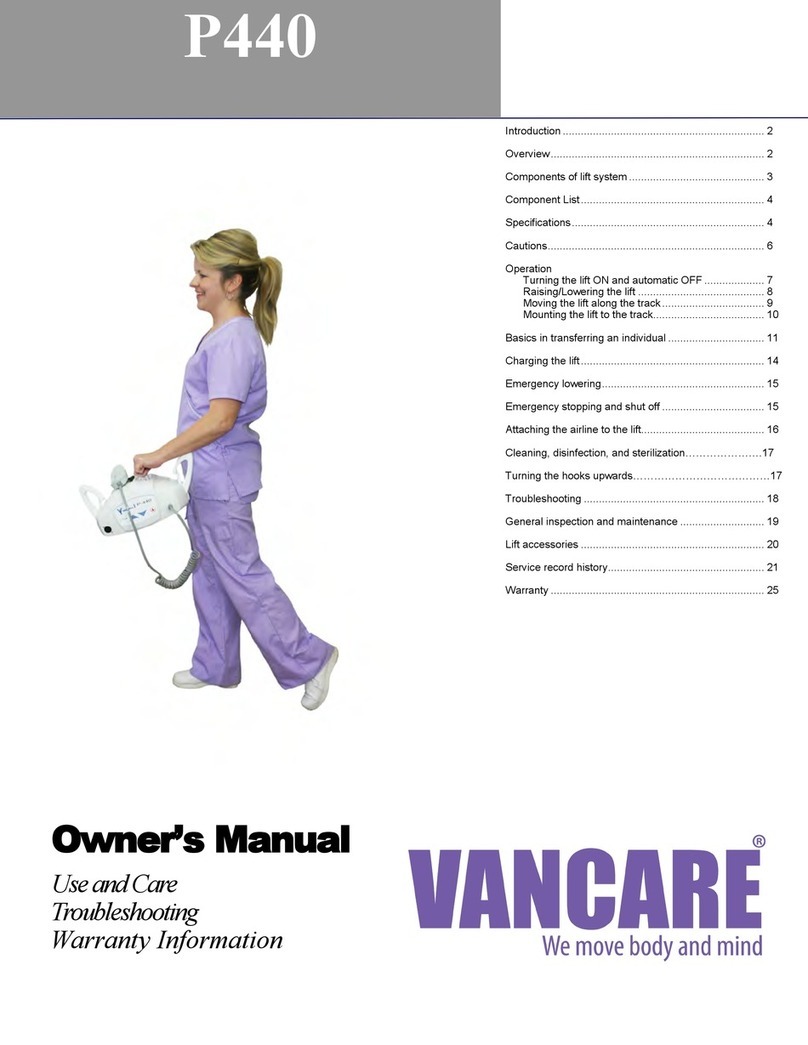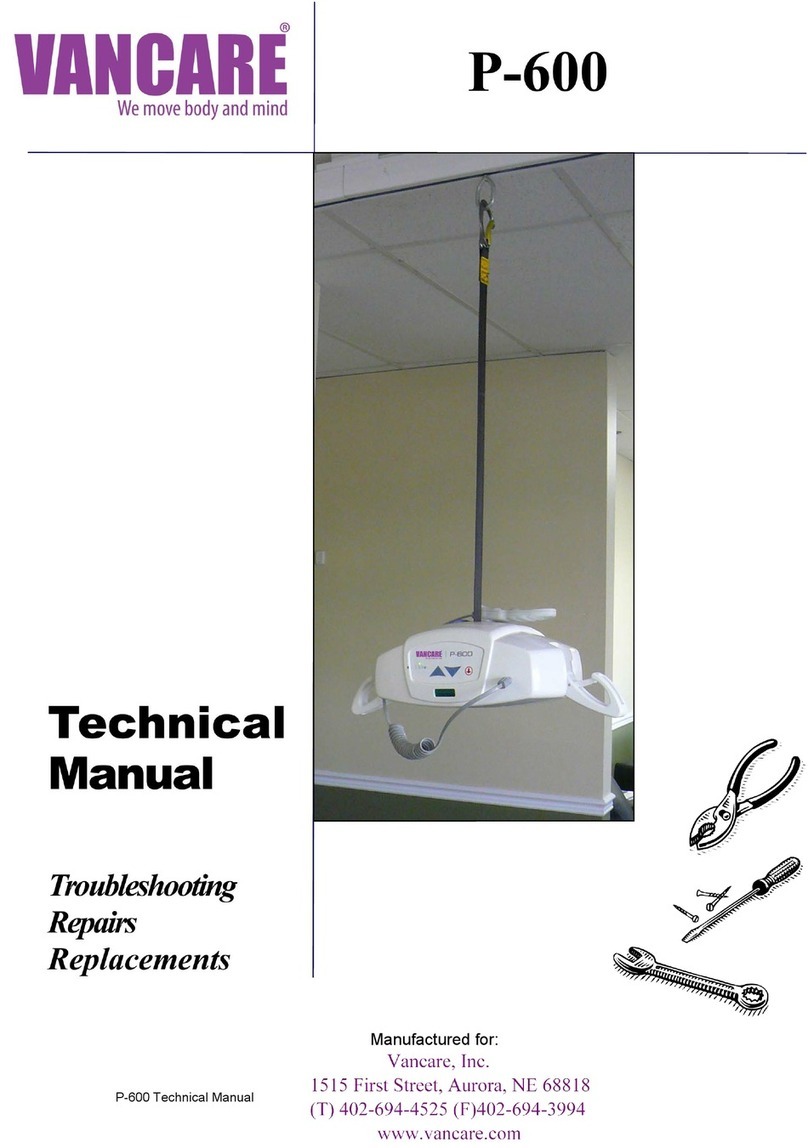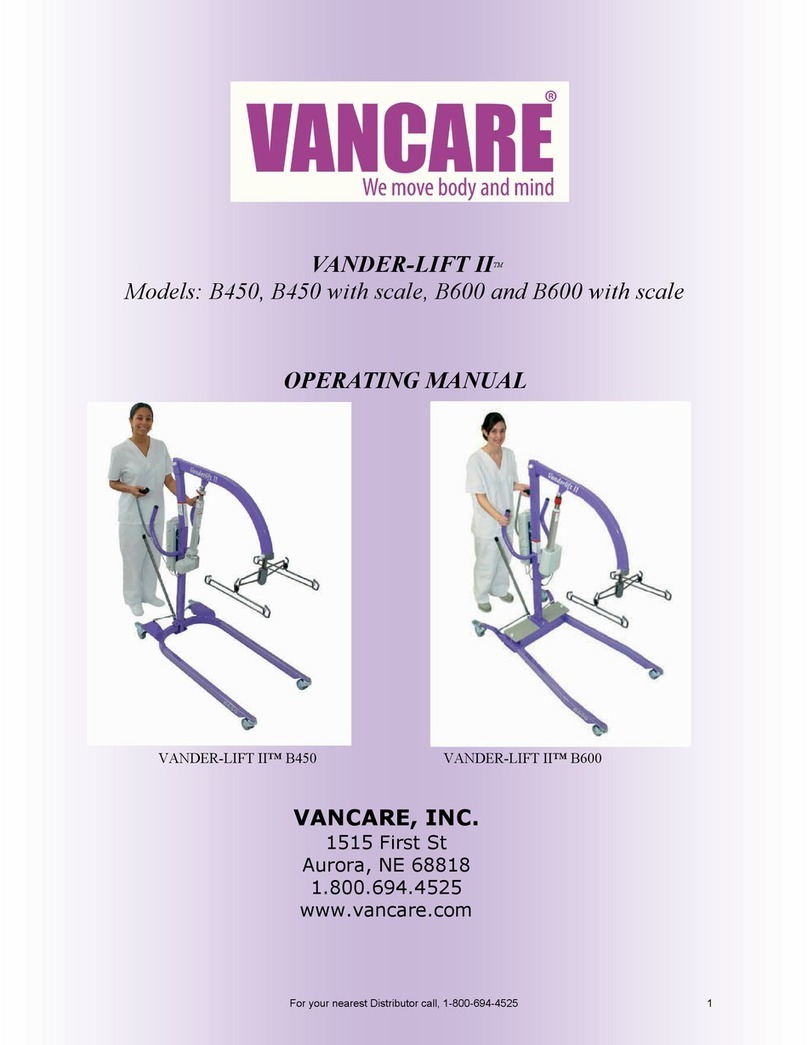
Electrical Systems
Ensure that the batteries are charged. Turn the lift on & look at the LCD reading to check the
battery charge level. If the batteries are not charged, put them on charge before servicing the
equipment or connect a fresh set of batteries. If the charger indicator does not give any reading,
batteries can be tested “outside the system” with a load tester or, again, a fresh set of batteries
should be hooked up. An occasional battery problem is acid leaks at the vents. Sometimes a leak
shows up as corrosion of the battery leads.
Do a preliminary inspection of the circuit boards for burn marks or burns odours. A single or
series of components may have failed. The PCB will have to be replaced.
When an electrical problem seems to be the cause of the malfunction, it is important to first check
that all the wire harnesses are plugged in. Secondly it is important to check all wire harnesses for
cuts and/or exposed wires. If this is found, the wire harness must be replaced.
NOTE: All lifts will come with new combined (Main + Aux.)PCB’s, C-450/C-625 Manual has only 2
air switches on PCB, C-450/C-625 Power or Manual PT has 4 air switches on PCB and C-450/C-
625 Power X-Y or Power Turntable has 6 air switches on PCB.
1. The new combined board (main + auxiliary) on Manual and Power Traversing systems;
additional attached charger adaptor board on Manual Power Turntable or Power XY /
Power Turntable systems.
A. The new combined board (main + auxiliary) on manual and power traversing systems;
The white power plug, second from left, connects the batteries to the circuit board. The circuit
board is connected to the main motor via the white plug (for power switch cable) on the right most
side of the board. On the top of PCB side, first from right, the white plug connects to traverse
motor cable. The board and main motor plugs are shaped to prevent erroneous hook-up. The
battery cables are color-coded black and red to match the battery leads. Check to see that the
board, lift motor and battery plugs are properly connected.
The large 2-pin white plug in the middle of top PCB side, connects the charger to the PCB. The
3-pin white plug, first on the left, connects the LED indicator to the PCB. The 16-pin connector,
third from the left connects the LCD display to the PCB. The 4-pin white plug, second from the
right, connects the “slack tape” and “tape thickness” limit switches on the tape switch assembly to
the circuit board. Check to see that the functionality plugs are properly connected (when
connecting a plug, it is easy to miss a prong) and that the wires do not pull out of the functionality
plugs (if a wire does pull out, it was either connected incompletely or connected upside down).
B. Additional attached charger adaptor board on manual power turntable or power XY
power turntable systems.
On the top of PCB side, the white plug, first from right, connects Adaptor Board Cable for manual
power turntable system. The white plug, first from left, connects Adaptor Board Cable for power
XY or power turntable systems.
C-450/C-625 Technical Manual

































